What do frogs eat? Frog eat insects with the help of their tongue and snails. Young tadpoles live on algae, and ultimately grow into carnivorous species. It can depend on their habitat location also.
 Where do frogs live?
Where do frogs live?
Frogs belong to the anura order of amphibians. They have adapted to dwell in both aquatic and terrestrial environments due to their amphibian status. They will utilize the water for a variety of functions, one of which will be reproduction.
There are several species of frogs, which are classified into 54 distinct categories (of which there are thousands of individual species). There is a tremendous deal of variation in terms of shape and biology among these several frog species. They come in virtually every hue, have a wide range of sizes and behaviors, and some are even dangerous.
However, all frogs have a glandular skin that can emit a variety of compounds to ward off predators or just to keep them hydrated. They have two huge eyes and strong, flexible legs in the majority of cases.
These legs contribute to their agility and the ability to leap extremely high in comparison to their body size. Not only does their skin protect the frog, but many frog species can ‘breathe’ through it by absorbing oxygen.
They favor humid locations near lakes, rivers, marshes, and other sources of water as their habitat. They can survive in the desert, but will require some form of water. While some frogs use their color to blend in with their surroundings’ flora, others are vividly colored to alert predators to their toxicity.
Summary
As previously stated, frogs inhabit a highly diverse range of habitats. Apart from the Arctic and Antarctic, they are found virtually everywhere. They are scarce in various sections of the African continent.
 Food Guidelines for Frogs
Food Guidelines for Frogs
Frogs are true generalist predators—in the wild, they will consume almost anything that comes their way. They will consume spiders, grasshoppers, butterflies, and nearly anything else that fits in their mouths. Frogs in the water consume a variety of aquatic invertebrates.
Each frog species has unique nutritional requirements, but in general, your pet frog will consume a combination of the following:
-
Crickets. These are the staples of your pet frog’s diet. That is not because they are the healthiest; rather, it is because they are the simplest to obtain or cultivate at home.
-
Mealworms and waxworms. These are another delectable frog nibble. Mealworms, like crickets, are relatively easy to obtain in pet stores and raise at home. You can also purchase them at fishing bait stores, but they will not be gut-loaded. You can also purchase them at fishing bait stores, but they will not be gut-loaded.
-
Grasshoppers and locusts. These are a little more difficult to locate in pet stores or to purchase for your frog, but they provide much-needed nutritional variety to your creature’s diet.
-
Worms or caterpillars. These are becoming more readily available for purchase in pet stores. Make certain that the caterpillars you purchase are the appropriate size for your frog, since they can get pretty enormous!
-
Bloodworms, brine shrimp, and blackworms are all types of worms. These, along with other tiny worms, will form the aquatic frogs’ primary diet.
-
Mice. These are consumed by giant frog species such as Pacman frogs and African bullfrogs. Begin feeding your frog “pinkies,” or newborn mice, as it matures. These can be purchased frozen or live—but bear in mind that the majority of frogs will not eat frozen frogs. Frogs larger than this will consume “fuzzies” or even adult mice. If this disgusts you, choose a smaller frog species.
Feed your frog food that is less than the width of the frog’s head; otherwise, your frog’s intestines may become affected. Whenever possible, get gut-loaded insects, as these are far more healthy for your frog! If you are unable to obtain gut-loaded food, your frog may suffer from vitamin A deficiency.
Summary
Avoid providing fruits or vegetables, human table leftovers, or wild-caught insects to your frog. Wild insects present a significant risk of pesticide exposure, which can be quite harmful to your frog. Certain individuals choose to “dust” their frog’s food with a nutritious supplement prior to feeding it to their frogs, particularly if they raise their frog’s food at home.
 The Life of a Frog in the Wild
The Life of a Frog in the Wild
As I indicated in the introduction, frogs are primarily carnivorous. They feed on insects that are abundant in the part of the world where they inhabit. The frog’s size dictates the size of the food it can consume.
Small frogs eat primarily insects, although giant frogs can consume small animals. Bullfrogs, for instance, have been observed eating tarantulas, snakes, mice, other frogs, and even birds.
Almost rare do frogs consume expire insects or animals. While it may be difficult to tell while dealing with wild frogs, it becomes obvious when keeping them as pets. Live crickets and mealworms are swiftly scooped up, whereas expire ones remain uneaten.
 Nutritional Supplements Of Frog
Nutritional Supplements Of Frog
Vitamins, minerals, and calcium are obtained by frogs from the diverse insects they consume in the environment. As previously stated, their dietary sources are limited in captivity.
Additionally, the majority of feeder insects sold in pet stores are deficient in nutrition. Consider crickets; they’re easy to produce and raise on low-quality food, but they lack the nutrients required for your pet frogs. Because crickets are not particularly nutritious, you must supplement their diet to ensure the health of your frogs. One method is to “gut load” your crickets.
Gut loading is the process of feeding feeder insects nutrient-dense diets for 48 hours prior to feeding them to your frogs. Throughout this process, you’ll want to provide fruits and vegetables to your feeder insects (crickets, for example) such as oranges, sweet potatoes, apples, and carrots. This will assist your frogs since the nutrients from the gut-loaded bugs will be passed on to them.
Another method of ensuring that your frogs receive all of the vitamins and minerals they require is to dust their food with supplements. Vitamins and minerals aid in the health of reptiles and amphibians. Calcium is another significant one. Calcium aids in the maintenance of their bones’ strength. Both are critical for the happiness and health of your pet frog.
Numerous companies manufacture and market supplements. Rep-Cal is one of my favorites. Their Herptivite multivitamins, as well as their calcium with vitamin D3, are critical.
 Foods For Adult Frogs & Baby Frogs
Foods For Adult Frogs & Baby Frogs
| Type | Baby Frog | Frog |
|---|---|---|
| Pet | Bloodworms, redworms, brine shrimp, pinhead crickets, wingless fruit flies | Earthworms, redworms, bloodworms, crickets, mealworms, locusts, grasshoppers, hornworms, waxworms, snails and slugs, minnows and pinky mice |
| Wild | Plant leaves and roots, mosquito larvae, water striders and other small insects | Beetles, earthworms, crickets, mosquitos, slugs, snails, ants, butterflies, moths, grasshoppers, locusts, minnows, other frogs, small rodents and birds |
Summary:
Texture crickets (and other feeder insects) is a straightforward procedure. Combine the feeders in a small container and add some supplement powder. Shake the bottle to distribute the powder evenly over the insects. Once finished, feed your frog the insects!
 Frogs’ Seasonal Diet
Frogs’ Seasonal Diet
The next sections will discuss frogs’ habits, including their diets, throughout the year. Additionally, how this applies to pet frogs will be discussed.
 Frogs’ Winter Habits
Frogs’ Winter Habits
You may have observed that the early morning croaking from the surrounding pond ceases to exist during the winter. So what happened to the frogs? Contrary to popular belief, frogs do not migrate in the same way as birds and other comparable warm-blooded, rational species do.
 Spring
Spring
When spring arrives, the frogs rush out in droves to gorge on food and mate. Males with an alpha-like disposition will often approach females first and wait for them to arrive at their pond to mate.
 Summer
Summer
Numerous frogs will continue to mate throughout the summer. The frequent loud croaking heard in the air is the male frog courting his female maiden frog to mate with him. Frogs’ eating patterns stay consistent throughout the summer, with some species eating continually and others eating every other day.
 Autumn
Autumn
Serenading in the spring and summer has ceased, and the frogs are once again preparing for winter. That involves cramming their faces 24 hours a day to ensure they have enough nourishment to survive the cold.
Summary
The frog prefers to live beneath the surface of the water, preferably at the bottom of lakes or ponds. While it may seem more rational for us to seek out warm regions, frogs would perish in dense muck or mossy areas. Because frogs breathe through their skin, they require oxygen-rich water to sleep efficiently, which is why the bottom of bodies of water is the preferred location for hibernation.
 When and How Much to Feed Your Pet Frog?
When and How Much to Feed Your Pet Frog?
The precise feeding schedule and amount for your frog are species, age, and activity level dependent. Frogs, like people, can grow obese if they are overfed. It’s critical to feed your frog the appropriate quantity to maintain him healthy and fit.
Frogs with a high metabolic rate (such as dwarf frogs) and young froglets (less than roughly 16 weeks) should have frequent food access. Daily, or perhaps twice daily, feed young frogs and high-energy frogs. This may include putting a small quantity of food, such as veggies and fruits, in the tank for the bugs to consume.
Frogs with a medium level of energy should be fed every other to third day. They should be fed approximately five bugs per meal. Feed enough to keep your frog from finishing in seconds, but not so much that you see bugs the next morning!
Feeding larger frogs less frequently is recommended. The giant mouse-eating frogs may feed as seldom as once or twice a week. Your pet frog’s water should be clean and DE chlorinated at all times.
A DE chlorinator is available at most aquarium stores. Provide a pool of water in the tank or regularly spray the tank—or both. Because frogs do not drink through their mouths, it is critical to maintain a high level of humidity. They “drink” water by absorbing it via their skin!
Frogs consume a diverse range of foods in the wild. To guarantee sufficient nourishment, feed your pet frog a variety of gut-loaded insects. Before taking your new frog home, make a plan for storing these live insects!
 Bullfrog Feeding
Bullfrog Feeding
Despite its seeming repulsive qualities, the bullfrog’s enormous size and grouchy Garfield-cat-like countenance appeal to a certain type of pet owner. It’s critical to understand what to feed your pet bullfrog if you want to ensure they have a long and happy life in their tanks.
Fortunately, bullfrogs are the polar opposite of fussy. Indeed, your pet bullfrog will swallow anything alive, including any pet mice. The following is an exhaustive list of the best foods to provide Mr. Bullfrog with:
-
The Vertebrate (think live mice). At pet stores, live mice and tiny rats are accessible for feeding to frogs and snakes (or to buy as pets). If you have difficulty throwing live animals into the frog container, then having a bullfrog is probably not for you.
-
Insects. Crickets, the frog’s basic food, are always delectable. Dust the crickets once a week with a calcium and nutrient product to ensure the bullfrog receives adequate nutrients.
 What Baby Frogs Eat
What Baby Frogs Eat
Baby frogs consume the majority of the same foods as adult frogs, albeit on a smaller size. When a young frog becomes large enough to consume live prey, it begins with small insects such as fruit flies, mosquitoes, and springtails. As the frog matures, it will begin to consume larger prey. Small worms, flies, spiders, and other insects provide appropriate nutrition.
In captivity, baby frogs also consume small insects. Two of the better alternatives are wingless fruit flies and pinhead crickets. They’re compact and readily available in pet stores.
Fruit flies without wings are ideal since they are simple to find and culture on your own. They’re also quite petite. Pinhead crickets are newly hatched crickets that range in age from one to three days. They are around the size of a fruit fly.
Finding pinhead crickets in a pet store can be a little more difficult, as they take longer to create. Additionally, the time span during which they are tiny enough to feed to infant frogs is brief.
Summary
One benefit of crickets is that insects keep growing than drosophila melanogaster, which implies that bigger crickets can be employed as your baby frog grows. Once your young frog reaches the appropriate size, you can introduce it to little mealworms. While not all frogs consume mealworms, it’s worth giving them a try.
 What Foods Are not eligible for Frogs?
What Foods Are not eligible for Frogs?
Frogs consume a diverse range of prey, but there is also a lengthy list of items that they cannot consume. Adult frogs, unlike many lizards, are entirely carnivorous. This indicates that you should avoid feeding them fruits and vegetables.
Anything other than meat or insects may result in impaction. Impaction is an obstruction in the intestines that, if left untreated, can result in death within a few days. Frogs are unable to consume any human foods. Seasonings used by humans (e.g. butter and spices) can be extremely hazardous to frogs. Other animals’ food may be a choking hazard or include toxic additions.
Finally, you should refrain from feeding any insects that you collect outside or within your home. These insects may carry parasites and diseases or may be contaminated with chemicals. They have the potential to make your frog very unwell.
The following is a list of foods that you should avoid feeding your frog:
-
Fruits & Vegetables
-
Prey larger than the frog’s eye-to-eye distance
-
Bugs captured in the wild
-
Food for humans
-
Other animals’ food (e.g. kibble)
 Are Poison Dart Frogs a threat to humans?
Are Poison Dart Frogs a threat to humans?
If you perused the amphibian section of your local library’s nature books, you’re likely to come upon the Poison Dart Frog. As their foreboding name implies, Poison Dart Frogs are notorious for being extremely venomous.
They are rare predators because they live in impenetrable rainforests and dense jungles. Simply touching their skin will poison you and kill you within minutes, making them one of the world’s most dangerous animals.
The vivid kaleidoscope of colors on the Poison Dart Frog cautions any animal with even a smidgeon of wisdom to stay far away. The Poison Dart Frog’s toxicity is primarily due to its varied diet of ants, mites, termites, centipedes, and tiny beetles, which the frog’s glands use to produce noxious chemicals that scare predators away.
However, their poisons may have therapeutic properties. Scientists have discovered chemicals that, in highly carefully extracted concentrations, may imitate the pain-relieving effects of morphine.
 Do Frogs Hibernate?
Do Frogs Hibernate?
Many creatures appear to vanish entirely during the winter. Our frogs are an excellent illustration. Due to the fact that these pond dwellers spend the most of their time in our waterways, how do they survive with plunging temperatures and freezing waters?
In the United Kingdom, there are two types of frogs: the common frog and the pool frog. They are members of the huge and ancient amphibian family. Amphibians are well-known for their capacity to survive both on land and in water.
Their skin must be maintained moist at all times or they may dry out. However, because frost and ice may cause just as much damage as heat, our frogs chose to hide from the approaching cold.
To face the winter in the United Kingdom, all amphibians must hibernate. Frogs accomplish this by emerging from the water and seeking refuge in an underground tunnel, leaf litter, or huge log pile.
They will conceal themselves from predators and enter hibernation, a state in which their body functions slow to a crawl and they allow their bodies to freeze. Most species would perish, making frogs the ultimate survivors.
Certain frogs may even make their way to the bottom of their pond and burrow into the mud. While the top layer of water freezes over, the underlying layer of water remains somewhat warmer, keeping the frog alive until spring.
Summary
When the weather begins to warm, the frogs will awaken and return to the pond from where they came. This can occur anytime between January and April due to the unpredictability of our weather. At this time of year, frogs are easier to recognize due to their hopping activity.
Frequently Asked Questions - FAQs
People ask many questions about frog. We discussed a few of them below:
 What food do Green Tree frogs consume?
What food do Green Tree frogs consume?
Green Tree frogs are extremely popular as pet frogs due to their mild, even shy, demeanor and stunning color. As indicated previously, smaller kinds will consume insects, whereas larger Green Tree Frogs will consume a small rodent or even a bat.
 Where do frogs sleep and live?
Where do frogs sleep and live?
Tree frogs for the most part snooze trees, amphibian frogs in water and earthbound frogs underground. Frogs situated in high-scope and cold locales additionally rest in Winter, and frogs in low-scope or desert districts for the most part estivate during Dry seasons.
 Are frogs bee eaters?
Are frogs bee eaters?
Yes. Indeed, dubia roaches are an excellent feeder insect for captive frogs. Bee also provide an excellent source of food for wild frogs.
 Where do Wood Frogs make their home?
Where do Wood Frogs make their home?
Wood frogs are usually found in the wild and are not kept as pets. They are found in frigid places such as Alaska and portions of Canada. Their way of life is physiologically astute: they can survive temperatures much below zero. As is the case with the majority of other carnivorous frogs, they feed on natural insects and accessible vertebrates.
 Are there any frogs that are really handsome?
Are there any frogs that are really handsome?
The Pickerel, a common frog in North America, is a gorgeous frog, to the extent that frogs may be handsome, with square to rectangular spots organized in clean, orderly columns along the spiny ridges of its back.
 What should I feed my frogs?
What should I feed my frogs?
While crickets are the most frequent frog food, it is critical to provide a diversified diet for your frog, which should include grasshoppers, locusts, mealworms, and, in the case of some larger species, tiny mice. You can purchase live reptile food at your local pet store or cultivate your own crickets to save money.
 Can frogs eat grass?
Can frogs eat grass?
Frogs are natively carnivorous, which means they consume only animals and avoid all plants. While this may appear to be an unhealthy diet for humans, frogs’ digestive systems are primarily designed to digest animal food, not plants.
 What do frogs consume?
What do frogs consume?
They do not consume water ■■■■■■ in the same way that we do. Frogs take in water via their skin. They have a semi-permeable skin that allows for the passage of water. While they do not consume it ■■■■■■, it is necessary for survival and can be absorbed through their skin.
 Is it legal to have a frog as a pet?
Is it legal to have a frog as a pet?
Frogs are excellent pets, if certain considerations are made. Frogs are reasonably easy and affordable to raise, they may live a long time, they make excellent display animals, they provide several educational opportunities for children, they are minimal maintenance, and they definitely have that cool/exotic thing going for them.
 Can a frog be a girl?
Can a frog be a girl?
In most frog species, the female is larger than the male, so frog size relative to a standard can be a good method of gender identification.
Conclusion:
In the wild, frogs are carnivores. Normally, they feed on insects, caterpillars, slugs, snails, worms, other frogs, fuzzy mice, pinky mice, and occasionally, tiny birds. Numerous insects, including crickets, locusts, and grasshoppers as well as mealworms, hornworms, bloodworms, brine shrimp, waxworms, and minnows, can be fed to a frog. Assure that the prey you feed is no larger than the distance between their eyes. Try not to take care of human food, made for different species, wild-got bugs or food that is excessively enormous.
Related Articles
https://howtodiscuss.com/t/frog-pose/115946
https://howtodiscuss.com/t/what-would-happen-if-frogs-were-extinct/64009
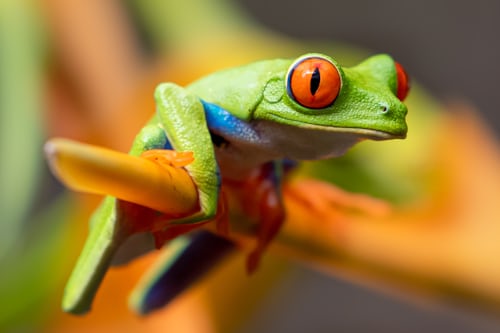
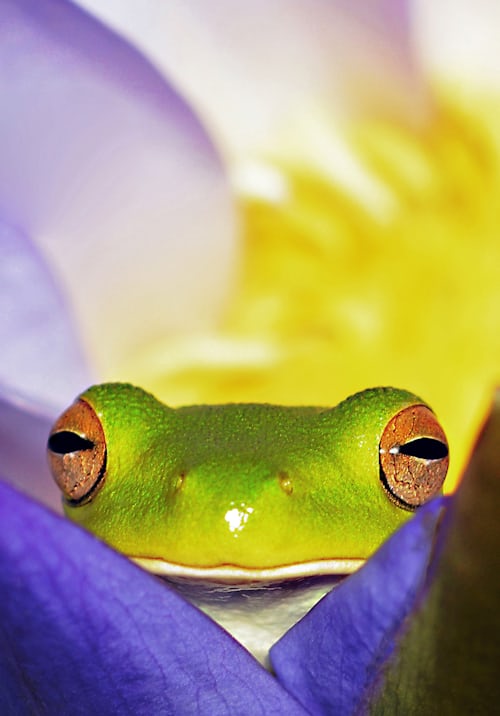
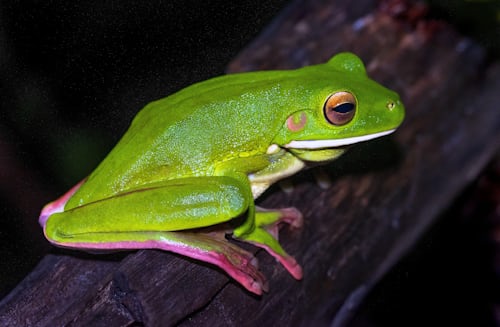

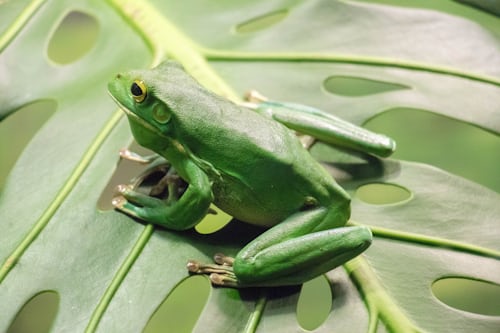
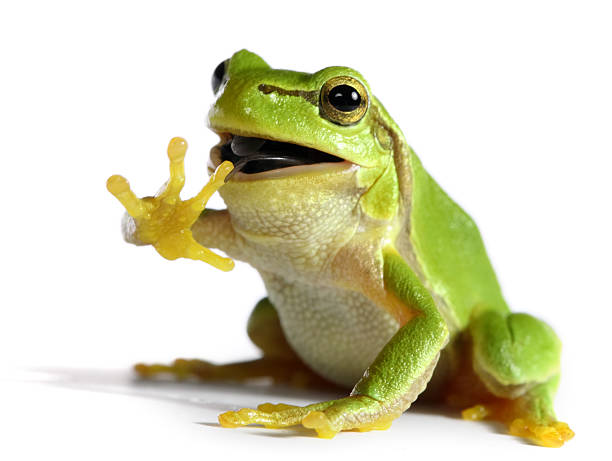
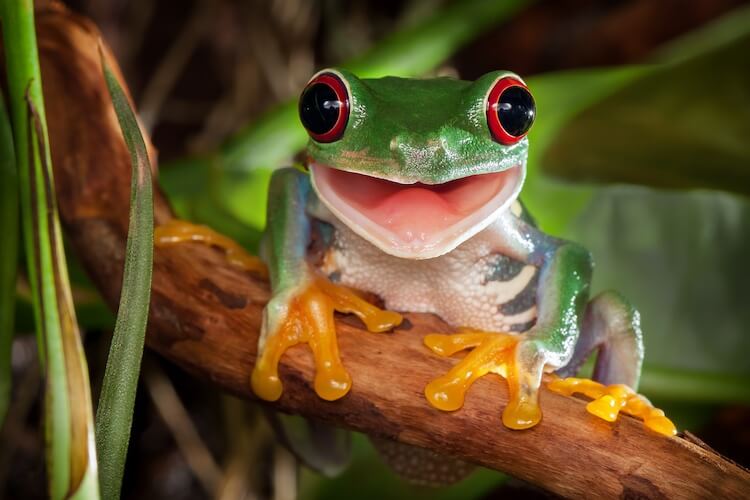

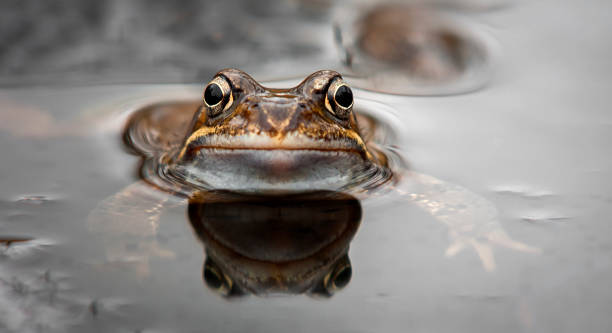



![What Do Frogs Eat? [You Will Never Guess!] 🐍](https://img.youtube.com/vi/0fJsmpnndew/maxresdefault.jpg)
